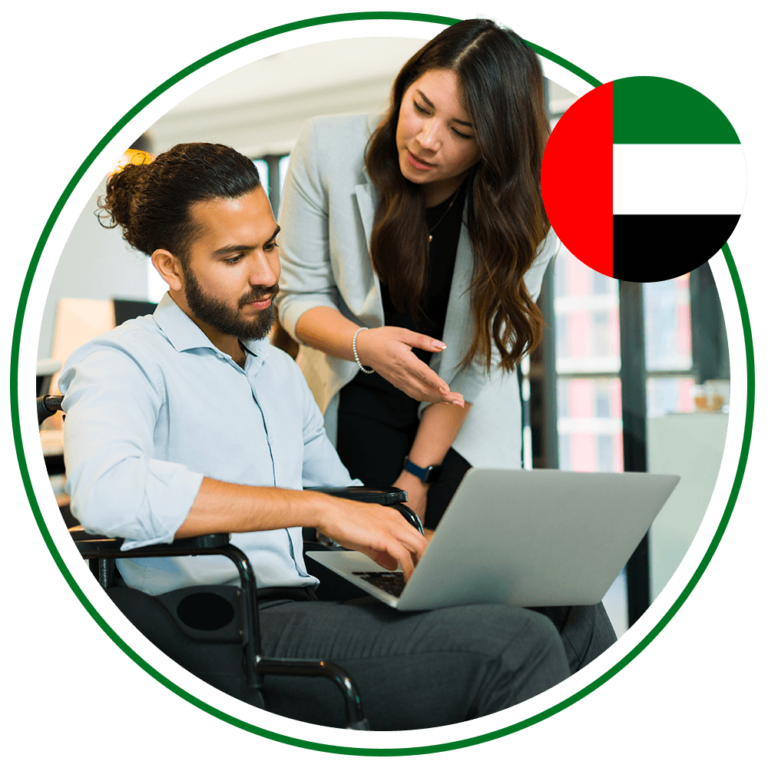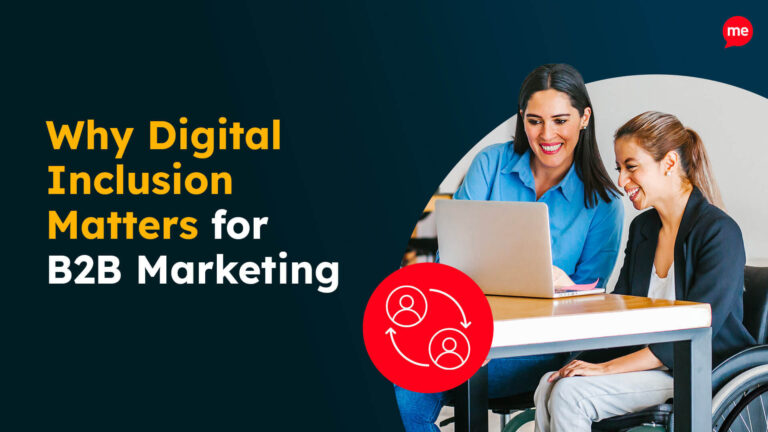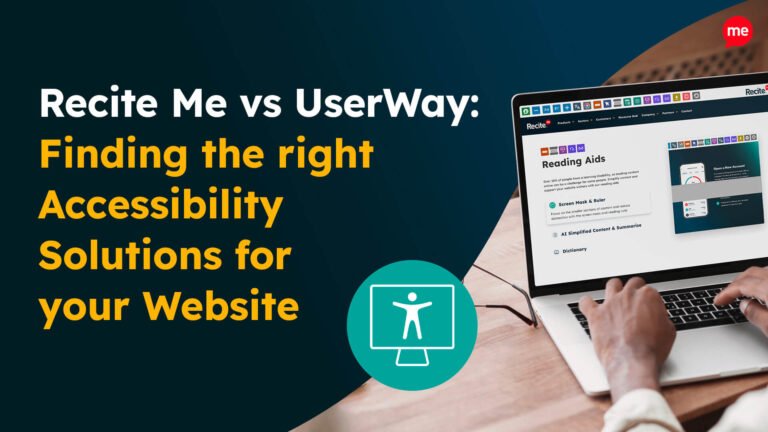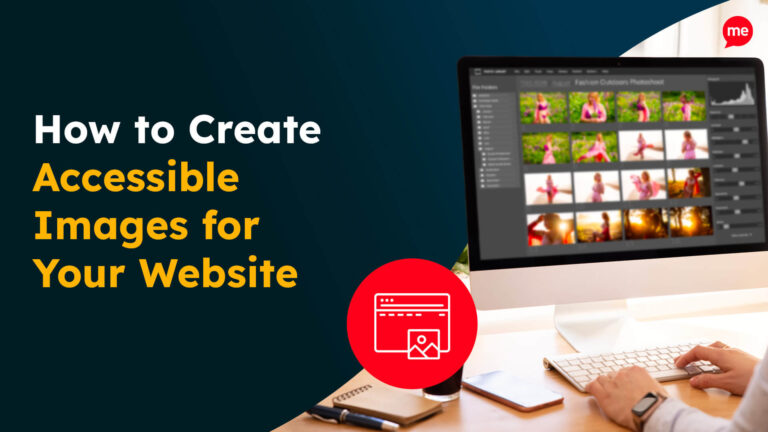Get Your Free Accessibility & Inclusion Toolkit
Download NowAs digital transformation accelerates across the UAE, the importance of creating inclusive and accessible digital experiences is becoming increasingly difficult to ignore. For a nation built on diversity, with expats making up almost 90% of the population, digital inclusion is not just a matter of compliance, but one of economic growth, innovation, and social progress.
In this guide, we’ll unravel the history of digital accessibility in the UAE, trace how legislation and policy have evolved, and offer actionable steps for organisations ready to lead rather than follow.
Digital Accessibility in the UAE: A Timeline
From foundational guidelines to cutting-edge policies, the UAE’s digital accessibility journey reveals both leadership aspirations and some gaps that must still be closed if inclusion is to become the default expectation rather than an optional extra. Here’s a timeline overview of the key legislative and policy milestones.

2006: Federal Law No.29
This foundational law outlined the rights of people with disabilities in areas such as education, healthcare, employment, and public services. While it offered broad protections, there was no specific reference to online spaces or international digital accessibility standards like the Web Content Accessibility Guidelines (WCAG).
2009: Federal Law No. 14
Widely referred to as the Disability Act of 2009, this update to the 2006 law facilitated better alignment with international standards. New aspects included:
- Digital accessibility: For the first time, rules were introduced that pushed for equal digital access for all.
- Alignment with WCAG: WCAG 2.1 Level AA was selected as the baseline standard for UAE websites and digital platforms.
- Accessible infrastructure: Mandates specified design standards and modifications for public transport, public facilities, and built environments.
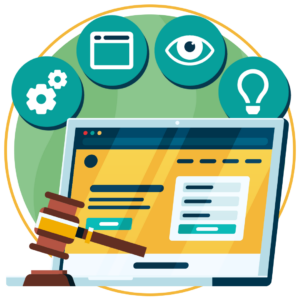
These enhancements signalled a growing awareness that equitable design must span both physical and virtual spaces.

2017: Empowering ‘People of Determination’
Sheikh Mohammed bin Rashid Al Maktoum coined the term ‘people of determination‘ as part of a national strategy to empower people with disabilities. This marked a turning point in how the country addressed the issue of inclusion.
2017: The Dubai Universal Design Code
With a goal of transforming Dubai into an inclusive and accessible city for all, the Dubai Universal Design Code mandates universal design in new buildings and requires existing structures to be adapted for accessibility. The design code also promotes digital equity for all, using WCAG 2.1 Level AA standards as a baseline.

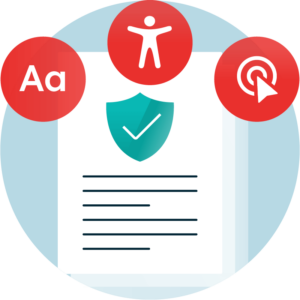
2022: The UAE National Digital Accessibility Policy
The National Digital Accessibility Policy is a framework designed to create barrier-free digital environments for all, but particularly people of determination and senior citizens. It is one of the first regional policies in the Gulf Cooperation Council (GCC) focused specifically on web accessibility and online user experiences. It applies to all federal government websites and e-services across a variety of platforms (web, mobile, kiosks, etc.). Again, the benchmark for compliance is WCAG 2.1 Level AA.
Get a free automated accessibility check of your websites homepage. This will identify and highlight any compliance issues on your website. Followed by recommendations on how to implement the necessary changes to make your website more accessible.
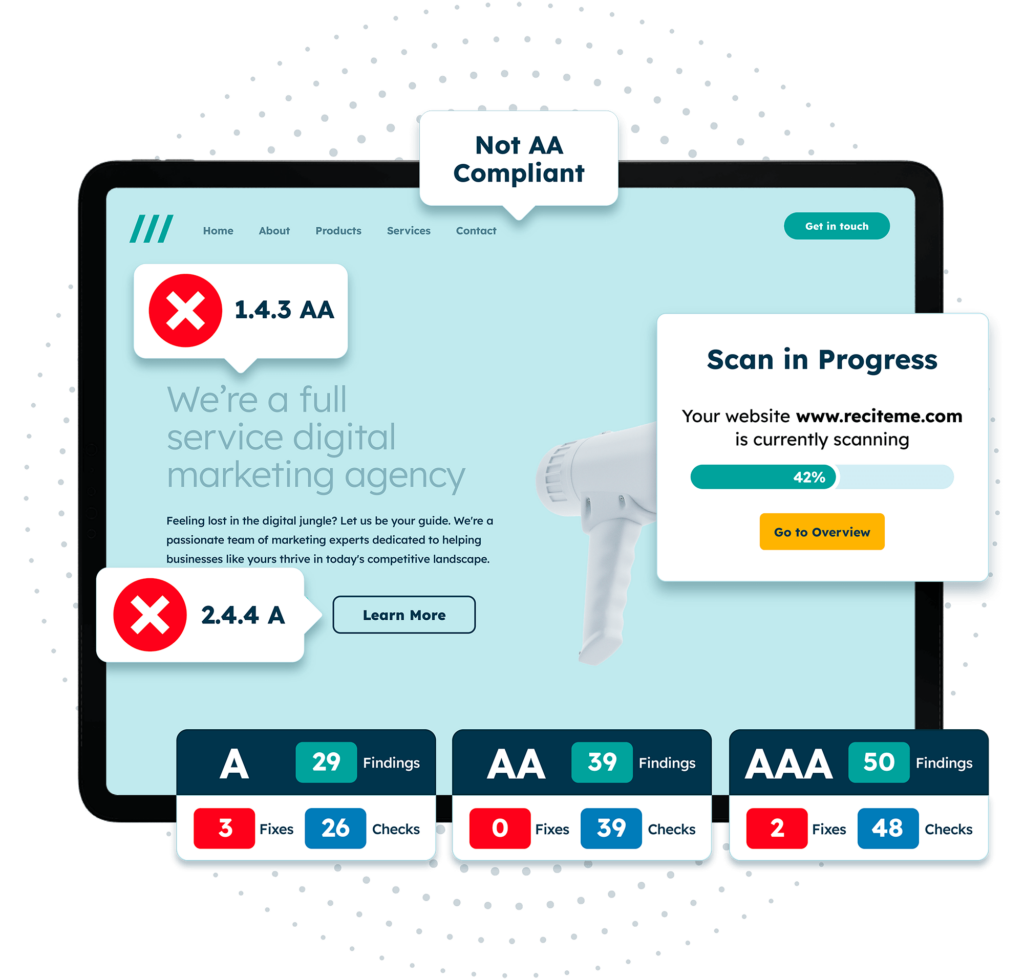
Who Must Comply with the UAE’s Digital Accessibility Laws and Policies?
The current legal framework only affects federal entities, including ministries, authorities, and public-facing platforms. However, with digital inclusion now seen as a marker of forward-thinking companies, market expectations are pushing privately operated businesses to embrace accessibility, even without a legal mandate.
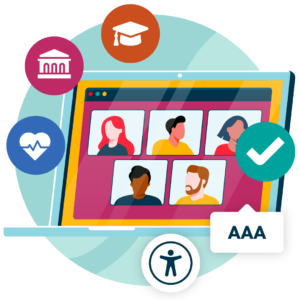
Organisations under the most pressure include:
- Private businesses with government contracts.
- Education, healthcare, and tourism providers.
- Tech and e-commerce platforms serving diverse audiences.
- International brands operating in the UAE.
The first private businesses to embrace digital accessibility enhancements are more likely to capture market leadership. They will also be better prepared for future regulatory changes, which are expected to include more vigorous enforcement and increased transparency.
Examples of Digital Accessibility Improvements in the UAE
Several ministries and government agencies have already taken bold steps and demonstrated leadership by embedding accessibility features into their digital platforms.
The following examples show what is possible when policy meets execution:
- The Ministry of Community Empowerment has integrated additional accessibility features into its digital portal.
- The Ministry of Culture provides bilingual (Arabic and English) text, simplified page layouts, and video content with captions to improve access for multilingual users and those with hearing impairments.
- The Ministry of Foreign Affairs provides specific accessibility features on its website to enhance user experience. Examples include colour-blind modes and dyslexia-friendly fonts.
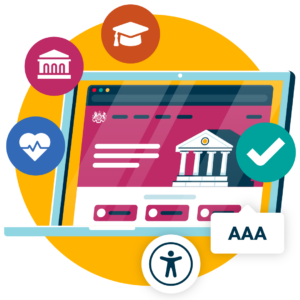
These improvements don’t just strengthen public trust. They reduce risk and send a clear message that accessibility isn’t optional. Rather, it’s part of what it means to serve effectively in the UAE’s digital era.
Why Digital Accessibility Matters in the UAE
Creating inclusive online experiences is the right thing to do. However, the business case for accessibility in the UAE is as strong as the ethical one:

- 99% of UAE residents are active internet users.
- The expat population comprises over 10 million people who speak a language other than Arabic or English as their first language.
- The World Health Organisation estimated that approximately 11% of the UAE population has a disability.
- Disabled people have higher unemployment rates. A gap caused, in part, by digital exclusion.
Accessibility in the UAE isn’t just a compliance checkbox. It’s a strategic advantage that empowers organisations to reach wider audiences, strengthen brand reputation, and future-proof their digital presence.
Common Digital Accessibility Issues in the Region
Despite some significant progress, many public and private sector websites still fall short of accessibility best practices. The most common barriers include:
Inability to navigate using only a keyboard
Poor colour contrast for text and buttons
PDFs and forms that are unreadable by screen readers
Lack of descriptive alt text for images
No accessible language switch or translation support is available
Images of text (not real text) that cannot be interpreted by assistive tech
Websites that don’t adapt to touch or mobile interfaces
These issues don’t just affect people of determination, but also those with temporary impairments, ageing users, and anyone reading in a second language.
How to Fix Accessibility Issues on Your Website
You don’t need to overhaul your entire platform to make progress. Here are a few easy, high-impact steps that can deliver measurable improvements quickly.
Step 1: Run an accessibility check of your website
Automated tools like a Website Accessibility Checker scan your website and generate an accurate baseline report based on WCAG criteria. The results should be paired with manual tests to catch usability issues that machines can’t detect, such as:
- Confusing content flow
- Misleading link labels
- Contextually poor alt text wording.

The best audits combine both technical and UX elements, focusing on content and interaction barriers in addition to code-level failures.
Step 2: Remediate the Issues
Your first targets should be quick wins that deliver value fast while building a foundation for more comprehensive improvements. Key fixes include:

- Descriptive links: Replace vague link text like “Click here” with descriptive alternatives.
- Clear heading hierarchy: Use proper heading structure (one H1 per page with H2-H5 nested in hierarchical order) to help users and assistive technologies understand the page structure.
- Colour Contrast: Ensure a minimum contrast ratio of 4.5:1.
Alternative text: Add suitably descriptive alt text to all functional and meaningful images. - Keyboard navigation: Ensure every page is navigable using only the Tab, Shift, Arrow, Enter, and Spacebar keys.
- Forms, documents, and PDFs: Use semantic HTML or accessible PDF tagging so screen readers can announce field labels, instructions, and error messages on online forms and documents.
These steps don’t just improve compliance. They make your site visibly more usable and welcoming to all users.
Step 3: Add Assistive Technology
Solutions like the Recite Me Assistive Toolbar empower individual website visitors with immediate access to personalised enhancements, including:
- Text-to-speech in 35 languages.
- On-screen text translation in 100+ languages.
- Customisable font size, spacing, and contrast settings.
- Audio downloads, reading guides, and screen masking.
- Built-in dictionary and thesaurus for cognitive support.
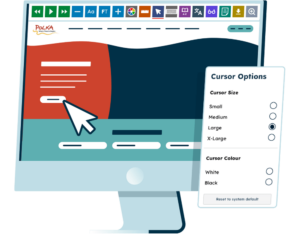
And the best bit? No rebuild is needed. Installation can be completed in minutes with just a few lines of JavaScript.
Step 4: Validate with Real Users
Test with screen readers and accessibility extensions, and invite users of determination to provide feedback. Consider usability testing with people across multiple assistive technologies, language preferences, and levels of digital literacy to reveal gaps ordinary audits may miss.
Our 40-page Digital Accessibility & Inclusion Toolkit helps businesses break down online barriers and make a real impact. It offers practical advice on all aspects of digital accessibility, from writing an accessibility statement to accessible website tips and inclusive hiring.
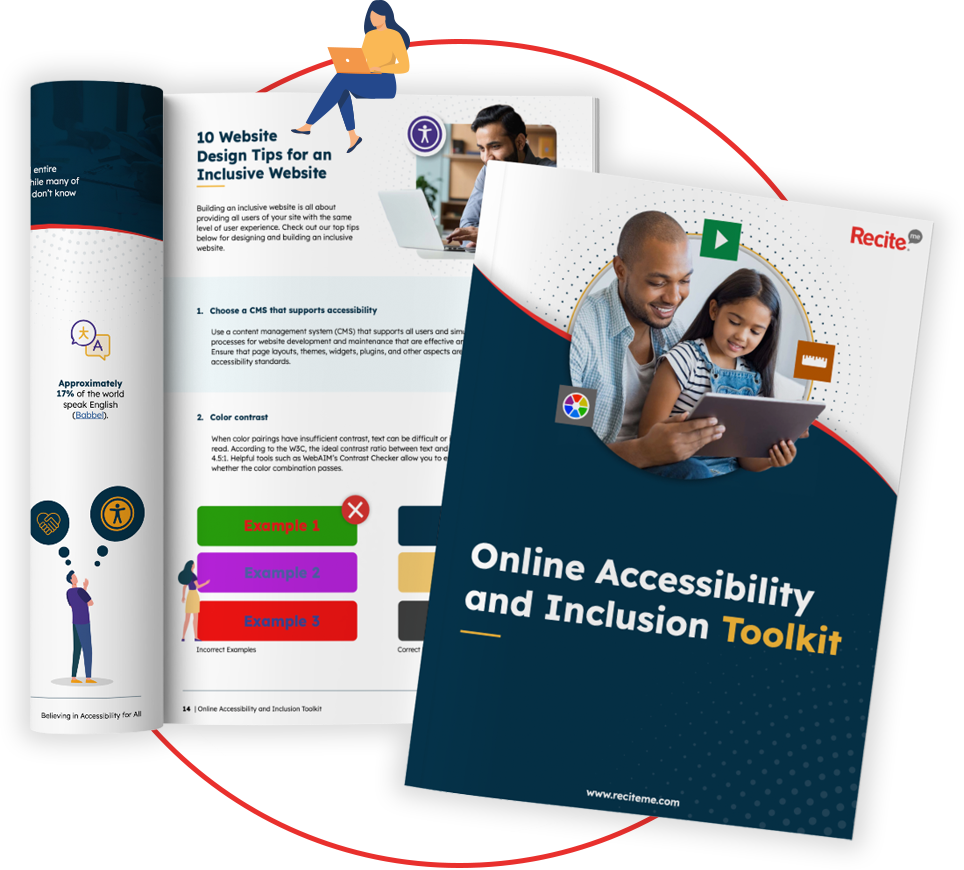
Lead the Accessible Future: Start Your Digital Journey Today
With its multilingual, tech-savvy, and diverse population, web accessibility in the UAE is both a necessity and a strategic advantage. The Disability Act of 2009 and the National Digital Accessibility Policy mark critical steps forward, but it’s up to individual organisations, both public and private, to turn inclusive intent into action.
Need help getting started? Download your free accessibility check today to get an instant snapshot of how your site measures up against WCAG 2.1 AA standards, and contact our team for more specific advice tailored to the unique needs of your organisation.
UAE Digital Accessibility FAQs
Here’s a list of the top questions we’re asked about digital accessibility in the UAE.
What is the term ‘People of Determination’?
It’s the UAE’s official term for individuals with disabilities, reflecting strength, resilience, and capability. Introduced in 2017 by Sheikh Mohammed bin Rashid Al Maktoum, it reframes disability in a way that empowers individuals and aligns with the nation’s broader vision of inclusion.
What are the laws and policies that govern web accessibility in the UAE?
The most up-to-date guidelines to be aware of are the UAE Accessibility Act of 2009 ( Federal Law No. 14 of 2009) and the National Digital Accessibility Policy. Both require compliance with WCAG 2.1 Level AA standards.
Do private businesses in the UAE have to comply with web accessibility laws?
At present, only federal government websites and services are legally required to comply. However, compliance is strongly encouraged across all sectors. For private businesses, and particularly those in education, healthcare, tourism, and technology, adopting accessibility best practices is essential to remain aligned with the UAE’s digital transformation goals.
What are the risks of non-compliance?
There are currently no financial penalties tied to the UAE’s digital accessibility mandates and policies. However, organisations that fail to prioritise accessibility risk losing both market share and consumer trust.
